Hailing from every corner of Africa are some of the most stunning, artisanal, hand-crafted textiles found in the world. From the elaborate kuba raffia of the Democratic Republic of the Congo to the rich white-and-indigo tie-dye cotton of the Yoruba people in South-Western Nigeria, the variety is seemingly endless. If you’re tired of the neutral palette or all-white living rooms, we strongly recommend checking out some of our fave African textiles compiled here (plus, sources to buy these artisanal treasures!)

Egyptian kilim
The art of kilim is so ancient, it’s become impossible to point down where it first originated. But this method of handweaving rugs and tapestries has long hailed from North Africa (as well as throughout Asia), with a major production hub in Egypt. Crafted from handspun Egyptian wool, kilim rugs and tapestries are distinguished from flat-woven crafts from other places in the world by their highly distinctive, simple, geometric patterning. These durable textiles make for the perfect area rug, their bold colouring and patterns immediately drawing the eye and grounding the room. Nile Rug, Kiliim, starting at $195.
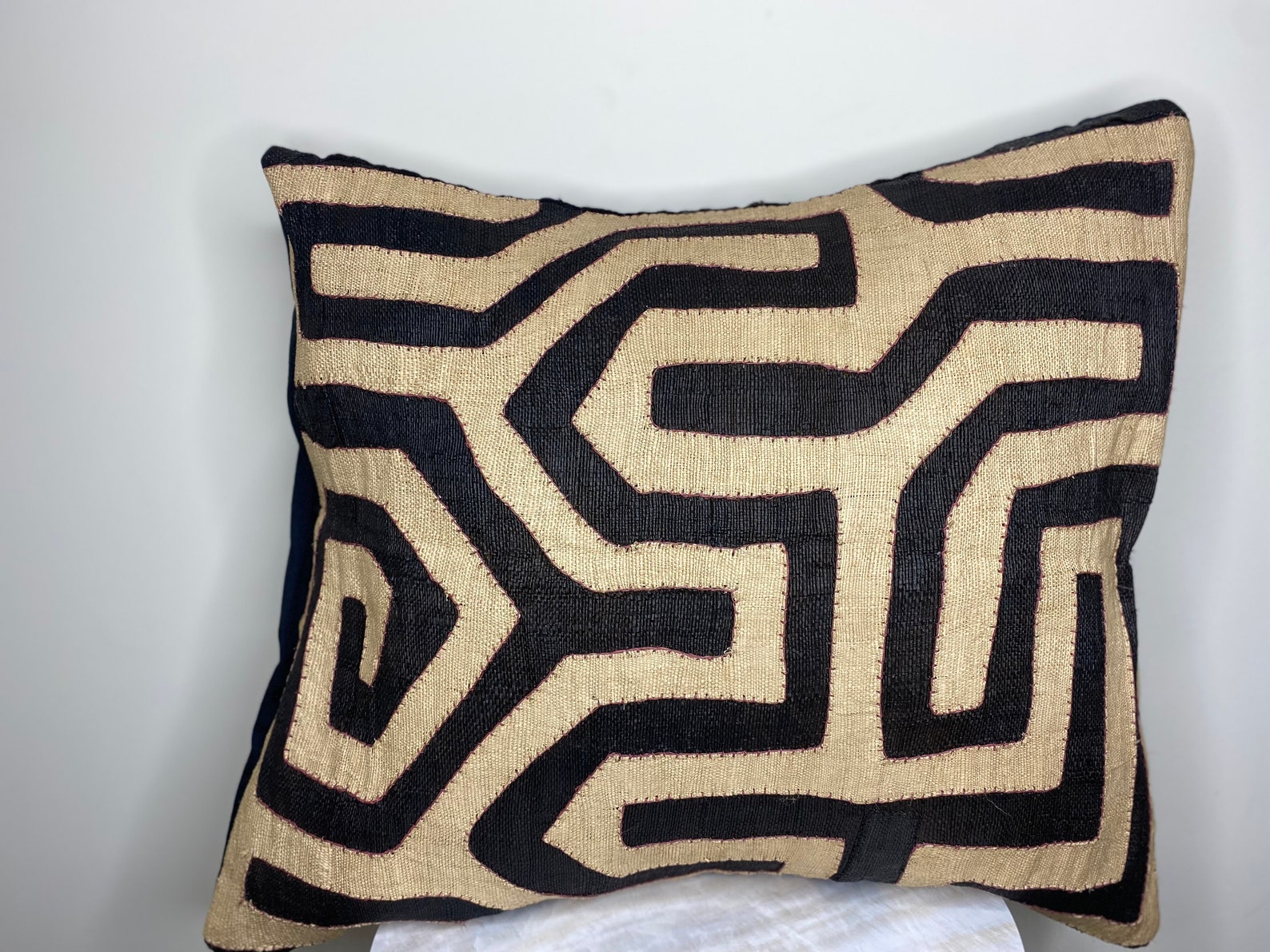
Kuba Raffia from the Democratic Republic of the Congo
The striking geometry of Kuba textiles is a sight to behold. The raffia used for this type of textile is traditionally cultivated and woven on a loom by men of the community. This cloth, originally tougher to the touch, is pounded down to velvety softness in a large mortar. The softened raffia is then given to the women of the community who apply finishing techniques like embroidery or appliqués. The finished result? A soft pile cloth patterned in bold, boho-chic geometry that suggests movement and flow. Kuba Cloth Pillow Case, Etsy – Africanartshop49, $80.
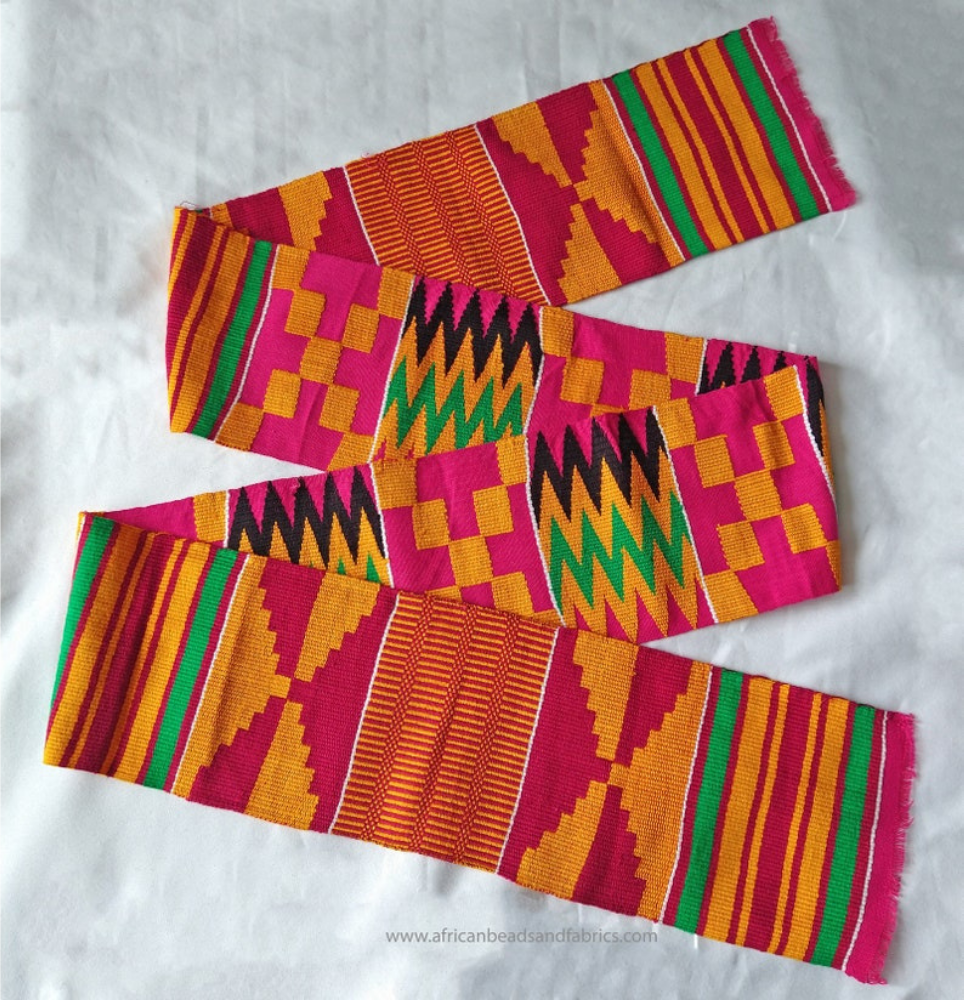
Asante Kente of Ghana, West Africa
While most cloth is woven on a loom the size of the finished cloth, asante kente is different. Kente is woven on a narrow loom in order to create long, narrow strips of cloth, roughly the width of a hand. These strips are then cut smaller and sewn together, patchwork style, to produce the final textile. Weaving kente involves crossing a row of vertical threads with a row of horizontal threads, resulting in a tartan-like textile that seems to hum with life. These stunning stoles make for the perfect decorative table runner: Fathia Kente Fabric Strip, Etsy – ExoticBeadHaven, $55.

Ewe Kente of Ghana, West Africa
Kente may have been originally crafted by the Asante people, but the use of this textile isn’t exclusive to them. The Ewe, a Gbe ethnic group, are another peoples who popularly adopted kente textiles. They then went on to greatly expand the variety of colours and patterns used in the creation of this beautiful cloth. Vintage Hand-woven Kente African Pillow Cover, AfrikanDuka, starting at $60.

Bògòlanfini (Malian Mudcloth)
If you’re a fan of earth tones, this is the textile for you. A mainstay of Malian artistry, the country upholds this stunning textile as a marker of their cultural identity. The word “bògòlanfini” directly translates to “earth cloth” or “mud cloth,” referring to the process of dyeing this cloth using iron-rich fermented mud. The technique dates back to the 12th century, when men would traditionally weave the cloth and women were responsible for dyeing it. This beautiful textile only becomes more storied with age, as its rich pigment warps into a variety of brown tones and any unpainted textile turns a pale, earthy russet. We’re obsessing over this Bògòlanfini showstopper of a cushion cover: Authentic Modern Pattern Bogolanfini Pillow Case, Saramani House, $40.

Adire of the Yoruba People
If your favourite colour is blue, you need to know about the adire textile from the Yoruba people of West Africa. The term “adire” means “tie and dye,” referring to the tie-dye technique that is used to create the striking indigo and white patterns that distinguish this textile. The bright blue colour is achieved with the use of indigo plants, both grown locally and imported. As the cloth is repeatedly dunked in indigo-infused water and left to dry, the blue oxidizes, becoming deeper and deeper. While this cloth has traditionally been used to craft clothing (Michelle Obama, anyone?), we’re increasingly seeing this gorgeous textile used more frequently in home decor. Adire Pillow, Kanju African Luxury, $160.
Related: How a Blue and White Scheme Creates the Ultimate Seaside Sanctuary
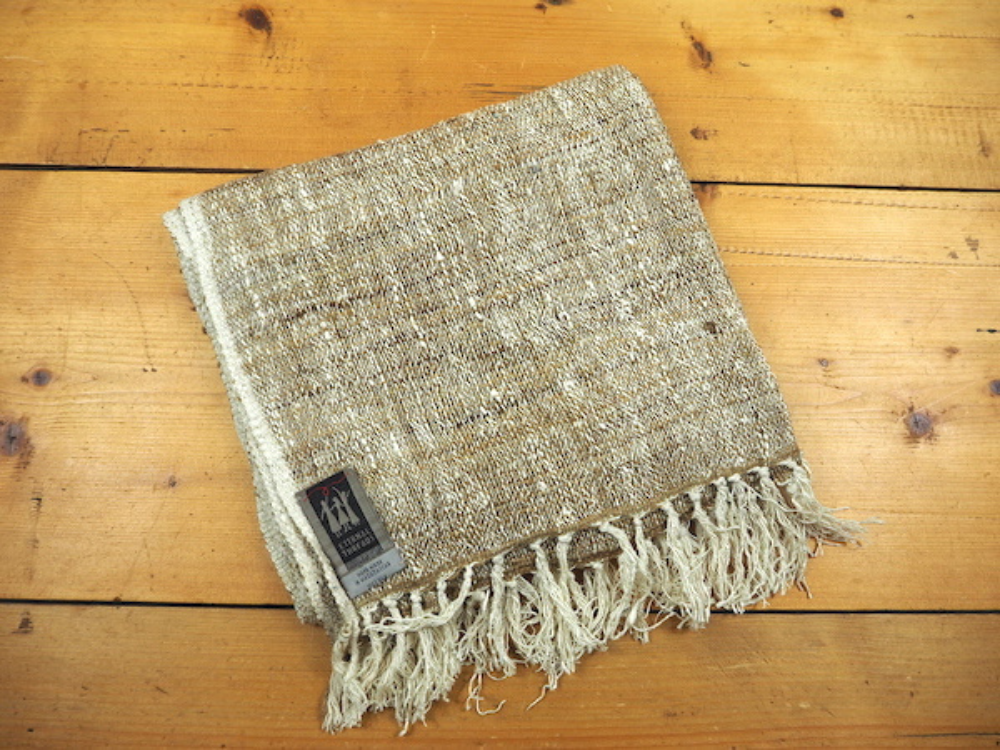
Madagascan Silk
Wild silk is a rare luxury, and one that the people of Madagascar have specialized in historically. Woven from the silk of a few silkworm species endemic to the region, the Malagasy people of Madagascar have hand-loomed these stunning textiles for centuries for use in traditional ceremonies and rites of passage. The process is arduous: first, wild silk cocoons are gathered from the forests. Then, silk is carefully picked out of the cocoons and boiled and washed clean. Once dry, the silk is spun by hand into thread. This thread is then dyed using both natural and synthetic dyes. This dyed thread is used to create the stunning silk works that emerge from Madagascar. We’re obsessed with this incredible throw, the perfect neutral addition to a cozy space: Silk throw, Eternal Threads, $65.
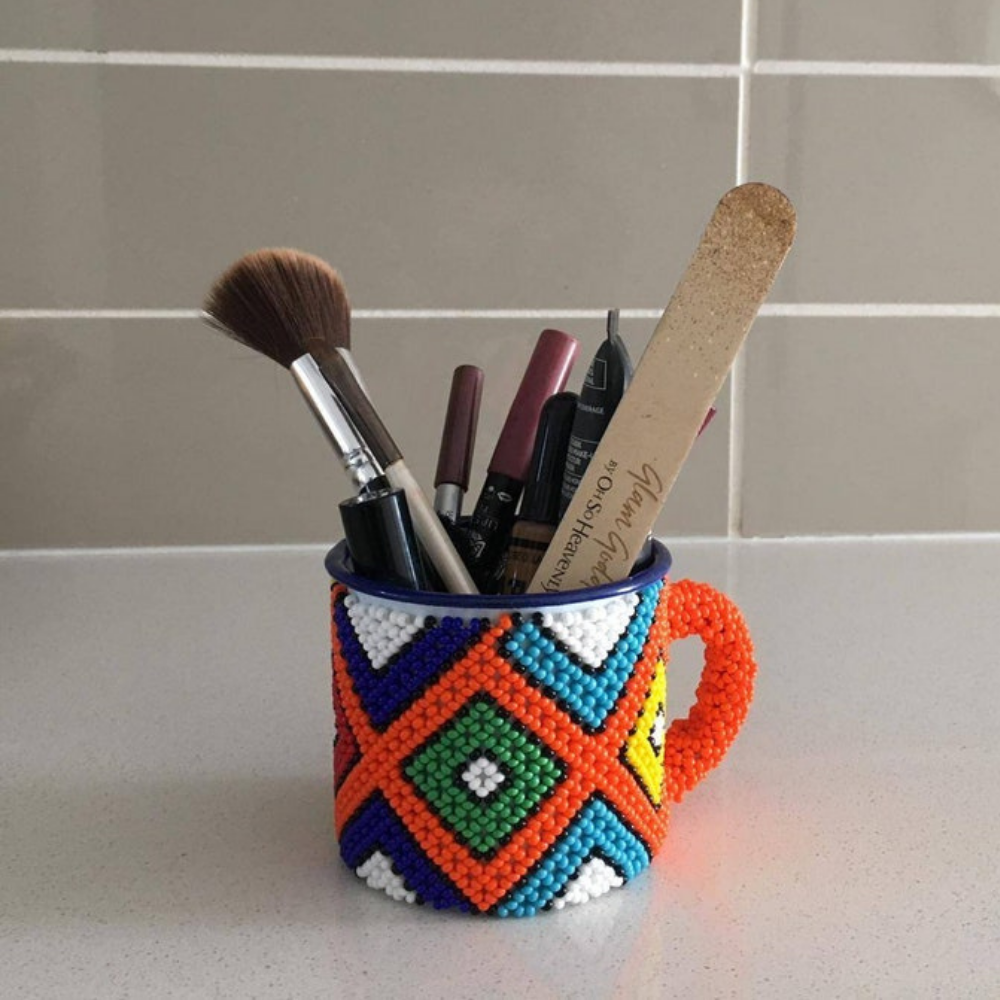
Ndebele Beadwork
The Ndebele people are native to present-day South Africa and some surrounding countries. You’ve definitely seen their iconic beadwork before. While not exactly a textile, this incredible technique deserves a place on the list for its sheer beauty and intricacy. Ndebele beadwork often carries significant social and symbolic meanings, such as various markings to differentiate cultural stages throughout a woman’s life. This type of beadwork is easily identifiable thanks to its strikingly vibrant colours and bold geometric patterns. With Ndebele-style beadwork emerging in markets like contemporary jewelry and home decor, you can begin infusing this brilliant art in your life too. Beaded Ndebele Mug, Abantuecollection, $54.
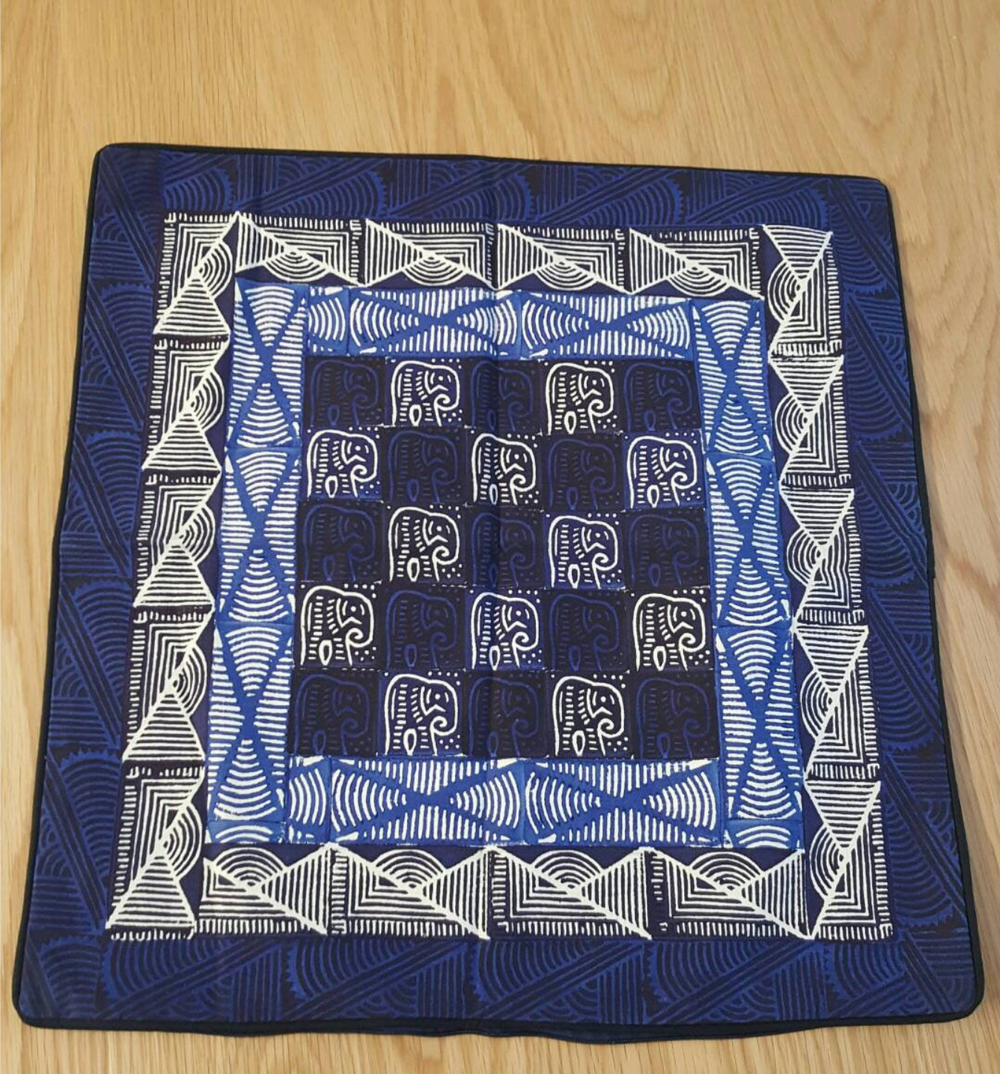
Zimbabwean Sadza Batik
Batik itself is not native to Africa. In fact, this technique is said to originate in Indonesia. Batik refers to the technique of wax-resistant dyeing, where patterns are stamped onto cloth in wax, and the entire cloth is soaked in wax-resistant dye in order to colour everything but the areas touched with wax. However, a similar technique is employed in Sadza batik, a textile technology that hails from Zimbabwe. Sadza refers to a porridge-like paste of wheat-meal, a Zimbabwean dietary staple. This dish does double duty, working in place of wax to create the ornate textiles that are called Sadza batik. The Sadza is applied in patterns over the cloth, eventually drying down and creating a stencil. This way, the cloth can be painted and dyed, and when the Sadza is washed off, the patterned textile is created. Traditional patterns typically include beautiful geometry and African animals. Zimbabwe Batik Elephant Print Cushion, SadzaBatik, $24.
Related: 10 Tropical-Inspired Room Designs Perfect for the Ultimate Staycation
HGTV your inbox.
By clicking "SIGN UP” you agree to receive emails from HGTV and accept Corus' Terms of Use and Corus' Privacy Policy.




